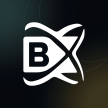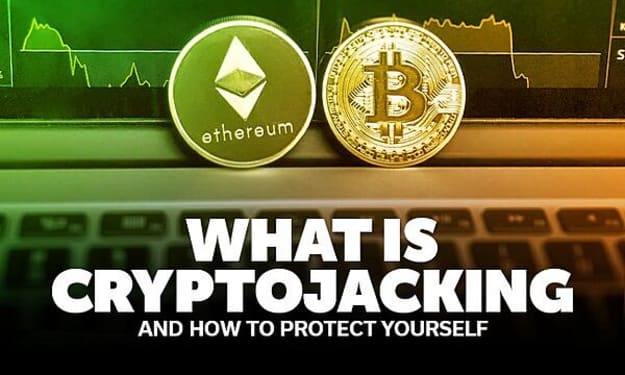Dfinance: Layer 2 Blockchain Network
With all the benefits and options available, Dfinance has a great chance of becoming one of the leading platforms in DeFi by 2021.

With all the benefits and options available, Dfinance has a great chance of becoming one of the leading platforms in DeFi by 2021.
The Dfinance project is not exactly what the WING Foundation intended to create from the ground up. Rather, it was born out of necessity while doing extensive research and analysis to find a potential new fit in the market.
The Cryptocurrency Market was realizing the growth potential of decentralized finance (Defi) in late 2018, however, the WING team noted an obvious reality: In the traditional financial market, many financial tools are created with financial experts. they have little or no technical knowledge. -as.
Therefore, the WING foundation decided to create a platform where these non-technical financial wizards can show their creativity with very little easy-to-do technical knowledge about the blockchain. And so Dfinance was born to bring unlocked value to DeFi.
The article will explore how Dfinance plans to realize the dream and the core technologies it employs.
Address composibility
The main work of Dfinance started in late 2018 and DeFi also started to catch on around this time. The reason is that DeFi not only offers interchangeability, transparency, and permissionless finance, it also brings composability to the table. DeFi’s inherent modular approach enables users to combine different assets, instruments, and networks for innovative products and services.
To realize this potential, Dfinance started a collaboration with the Elrond Network, a public platform for high-performance smart contracts. The goal is co-benefit through higher utility and lower usability barriers.
This will establish a bi-directional gateway between the two networks to facilitate asset transfers. Dfinance users will create new types of products, including Elrond asset-backed products such as the native $ BUSD or $ ERD stablecoins. On the other hand, this will allow Elrond users to access existing instruments and build their DeFi tools on the Dfinance platform.
This partnership will drive what Dfinance has set out to achieve: full access to DeFi’s potential.
The main technology
Consensus mechanism
Dfinance opted for the Consensus Network’s Tendermint Proof-of-Stake (PoS) mechanism. The team has yet to decide the final number of validation nodes for the core network. The current testnet contains 31 validation nodes.
Tendermint offers the following benefits:
The PoS mechanism offers excellent scalability and high speed, necessary for a rapidly expanding platform. Even Ethereum has planned to switch to its own PoS.
Tendermint’s inherent Byzantine Fault Tolerance (BFT) feature enables the Dfinance network to withstand unpredictable malicious attacks or network node failures.
Help in p2p communications and for security purposes.
The architecture
The Dfinance network consists of three main components:
dnode — The blockchain node is built with the Cosmos SDK. Includes Tendermint consensus, PoS modules, Oracles, functional VM, etc.
dncli — This is the command line interface (CLI) for interacting with dnode. It also allows you to start the REST API server.
dvm — Move Libra VM packaged as gRPC server, allowing smart contract execution via gRPC. In addition, it contains compilers for the Move language. It requires dnode for its correct operation.
Token system
Dfinance employs a two-token system.
DFI — The native DFI coin is used for multiple public services such as gambling, paying the gas fee, governing and offering liquidity on the network.
XFI: The main ticker currency (ERC-20) is used for transactions. It will be available once the mainnet launches and can only be acquired through WING token exchanges.
The smart contract execution platform
In its quest to offer a powerful code execution platform, Dfinance uses the Move language and Facebook’s Libra virtual machine (VM) on its decentralized nodes. This allows connecting to dnode to read data from storage, while dnode connects to VM to run smart contracts. Unlike other EVMs, the Move platform feature is resource-oriented and offers bytecode verification, making it much more secure.
The module type is issued on the blockchain storage and archived in the publisher’s account. On the other hand, script smart contracts are simply a transaction like script and therefore can only work with existing modules. These default modules, called the Standard Move VM library, are used to develop new modules.
PegZone
An integral part of DeFi is achieving the highest possible liquidity. This means being interoperable with other popular blockchains.
To achieve this easy transfer of value across chains, Dfinance employs the PegZone protocol. Dfinance plans to be interoperable with numerous Layer 1 blockchains like Ethereum, Bitcoin, EOS, etc. The current version of testnet only supports the Ethereum blockchain and therefore offers any other ERC20 tokens, including ETH support.
PegZone allows you to lock these ERC20 tokens in a smart contract called Bridge on the Ethereum blockchain, which is managed by the list of approved validators. Once deposited, they release a proportional amount at the address indicated on the Dfinance network. This feature allows approvers to charge a 0.1% fee of each transaction for cross-chain value transfer only when coins are deposited.
Oracles
Currently only supports price feed oracles. The Dfinance platform collects published prices from various whitelisted oracles, calculates the median, and stores the final price for the last block. Dfinance offers the option to write your own module that can use the Oracle feed.
As of now, Binance is the only platform that it gets prices from, and it supports ETH-USDT and BTC-USDT pairs. Dfinance plans to supplement more exchanges and trading pairs.
Stake out and cut mechanism
Since using PoS, staking is an integral part of the Dfinance network.
Node validators are selected based on the amount of participation they have. Additionally, users can delegate their participation to preferred node validators by locking these DFI coins into smart contracts. When validators earn rewards, bettors also benefit from them based on their bet size — a higher stake leads to higher rewards.
On the other hand, Dfinance has a clipping mechanism to discourage unwanted activities on the network. The punishment strategy he uses is the following:
Missing Blocks — In addition to a 1% bar up for grabs, that validator is denied participation in the consensus until it submits a manual release request.
Double signature: a 5% reduction in bets.
Dfinance plans to introduce various liquidity betting mechanisms to provide loans, liquidity, loans and other financial services for delegates through the obtained sDFI coins. In addition, this increases the stake maturation time.
Conclusion
The project goal is aligned with DeFi’s exponential growth, and Dfinance is rapidly building its platform on a solid foundation. It will not be surprising that Dfinance becomes one of the leading platforms in DeFi by 2021.
Altcoin News, Bitcoin News, Blockchain News, Cryptocurrency News, FinTech News Thank you!
About the Creator
BlockchainX
BlockchainX is a leading Blockchain development company rendering services across all streams. From NFT market to metaverse development, we help you simplify your tasks and identify better solutions for business in web3.






Comments
There are no comments for this story
Be the first to respond and start the conversation.